Dutch ‘King of Battle’ Thunders in Afghanistan. Around daybreak on the second of September an ISAF-led offensive – codenamed Medusa – in southern Afghanistan, begins with an intense aerial barrage from Canadian/Dutch artillery; British Harrier GR7 jets; Dutch AH-64D ‘Apache’ attack-helicopters and F-16 fighter-bomber jets; and U.S. A-10 ‘Warthog’ warplanes and B-1 bombers while reconnaissance aircraft cover the area with intense surveillance. During this offensive the PzH-2000NL 155mm/52-cal self-propelled (SP) artillery system made its Combat Debut. With tooth-rattling blasts Dutch ISAF artillerymen demonstrated from that day onwards the whole offensive its ability to reach out and touch Taliban-fighters with precise and devastating effect.
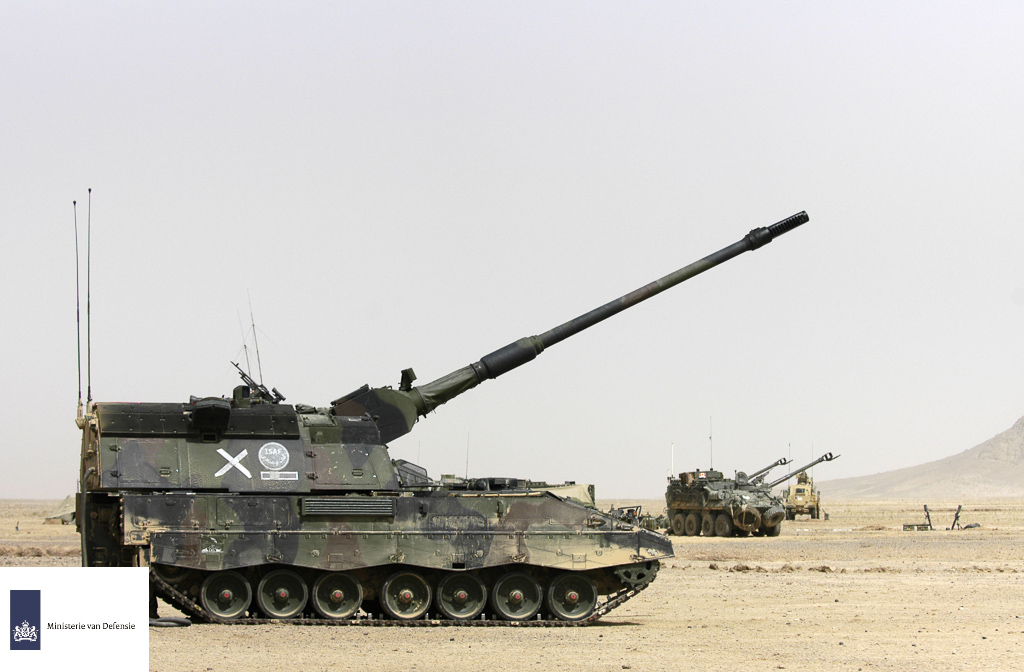
The Netherlands is a key contributor to a multinational force that took command of security operations in volatile southern Afghanistan from the coalition at the start of August, amid the deadliest upsurge in violence since the fall of the Taliban regime in late 2001. The Netherlands, Britain and Canada supplying together about 8,000 troops in the each other neighbouring Southern Afghan provinces Uruzgan, Helmand and Kandahar.
The Royal Netherlands Army (RNLA) is the first army in the world of the PzH-2000 community that has deployed three of these advanced artillery system overseas. As part of the Dutch led 1 (NLD/AUS) Task Force Uruzgan (TFU) of the International Security Assistance Force (ISAF) in Afghanistan, these Howitzers will provide fire-support for the two Dutch camps in Tarin Kowt and Deh Rawod and the road that connects both. The intention is that, one Howitzer will be based on ‘Kamp Holland’ at Tarin Kowt and the second one at Deh Rawod, while the third one will act as reserve at one of these two bases. Although, because of the delayed delivery of the PzH-2000NL a 120mm mortar group from 11 Infantry battalion ‘Air Assault’ was prior flown in as a interim solution to protect both camps at the time the Howitzers were not available to TFU.
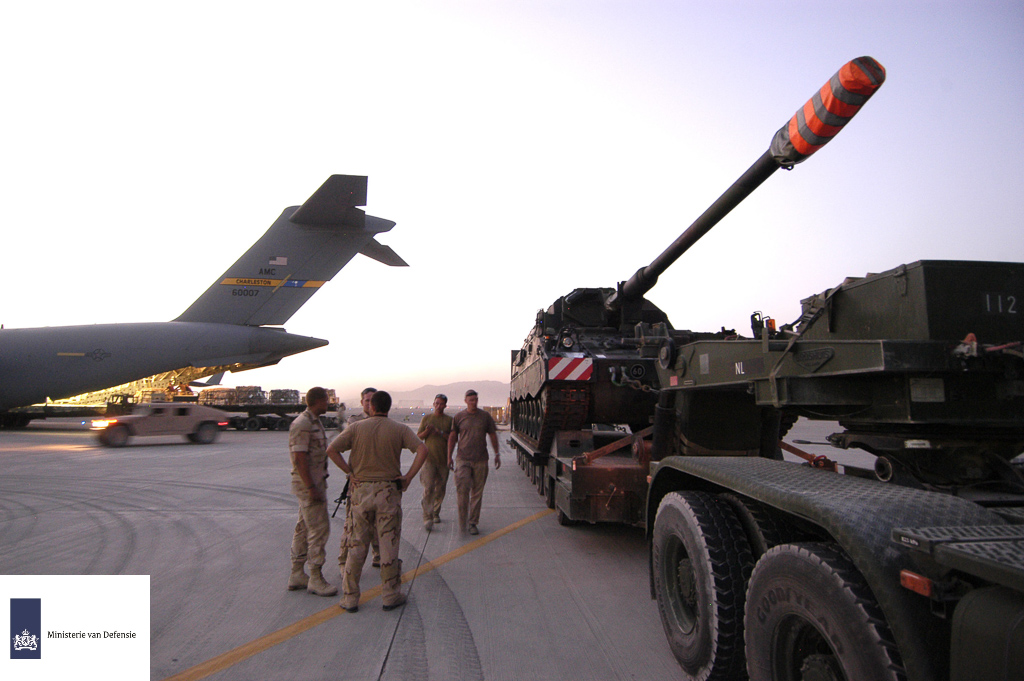
The Howitzers were transported from Ramstein Air Base, Germany, to Kandahar Airfield, Afghanistan, on board a C-17 Globemaster III. TFU is part of Netherlands contribution to the Islamic Republic of Afghanistan. This mission is about the Netherlands and their international partners helping Afghans rebuild their lives, their families, their communities and their nation. Dutch operations will work to improve the quality of life of Afghans by providing a secure environment in which Afghan society can recover from more than 25 years of conflict. The Netherlands contribution in Afghanistan will comprises about 1,600 soldiers, most of who serve with TFU at Tarin Kowt and Deh Rawod in the Uruzgan province. Additional personnel are assigned to various ISAF military headquarters.
Immediately after a delayed arrival in Afghanistan, at the request of the commander of Regional South Command in Southern Afghanistan, two out of the three Dutch deployed PzH-2000 Howitzers have been temporarily re-assigned to the southern Afghan province of Kandahar in aid of Operation Medusa to protect Canadian troops participating in this mission. There they operate side-by-side with a section of Canadian M777 Howitzer 155mm towed artillery pieces.
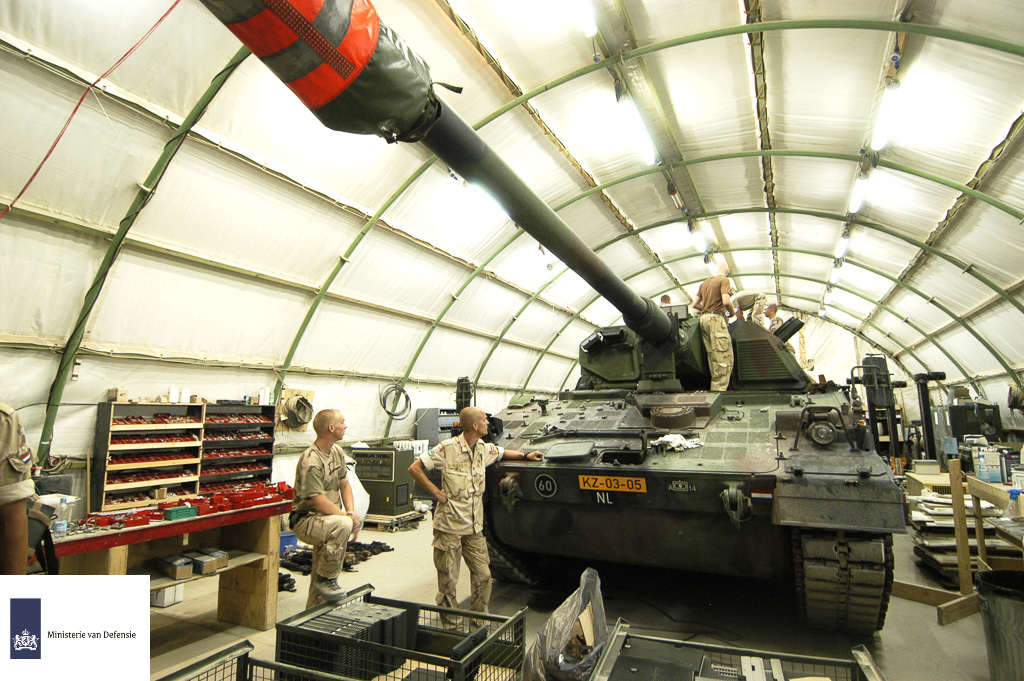
During fire missions, and that for almost every day of operation ‘Medusa’, the Howitzer performed twenty-four hours round-the-clock with more than satisfying results, with no major problems at all, according to the artillery crews. The PzH-2000NL let loose barrages of bone-jarring blasts that sent rounds screaming to rain steel down on enemy targets at often more than thirty kilometres away. Numerous explosions echoed across grape and pomegranate fields and clouds of dust rose amid the greenery and dried-mud houses of the Panjwayi district. The Dutch artillerymen gratefully used the given opportunity in real combat to hone their ability to provide destructive, suppressive and protective indirect and direct field artillery fires with their “cream of the crop” 155mm/52-cal SP.
The power of the Dutch “big gun” is awesome in every sense of the word. Most people have never felt anything like it in their life. For a split second, you can not breathe. Your eyes will have a red out for half a second. You can actually feel the shockwave from the cannon hit your body. You might even fall over… and that is not even with the strongest charge. Firing a standard 155mm high-explosive projectile, the PzH-2000 has a maximum range of 35 kilometres or 37 kilometres using a standard base bleed projectile. When firing the newly developed generation of artillery ammunition, Rheinmetall’s RH40 base-bleed extended-range high explosive round, the Howitzer is capable of reaching targets at even more than forty kilometres away.
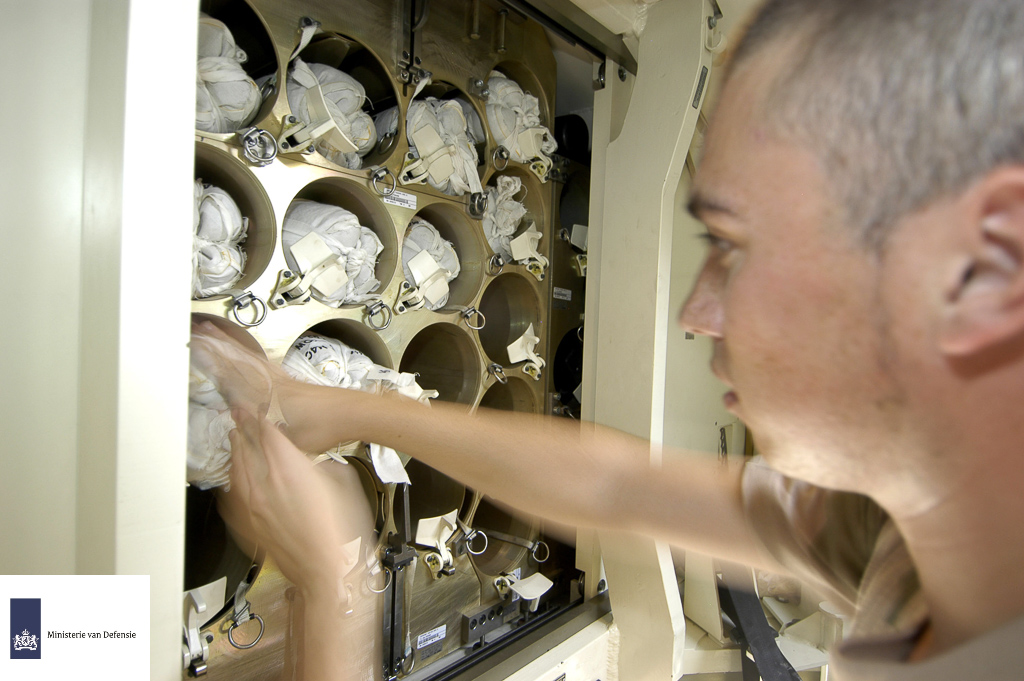
The distance the round travels depends also on the kind and size of the charge that is loaded behind the round. The kind of charges in use are the traditional green or white coloured bagged charges (in Dutch called ‘Kardoezen’) and/or the new Rheinmetall’s DM92 Modular Charge System. The newly MTLS DM92 propelling charge system is especially developed to be employed at a firing temperature of +63° C, which making it very suitable for use in these kind of out of area operations in extreme hot climate zones. Putting the PzH-2000 power to use starts with a call from Canadian and/or coalition forward observers in the field. They fill the Fire-and-Control command post with urgent bursts of radio traffic, telling the Dutch artillerymen where they want them to shoot. Basically that information is put into the Howitzers advanced field artillery tactical data system computer, along with what kind of rounds are needed and who is calling it in. The artillerymen on return call the forward observers when they fire and the observers give them feedback to adjust fire or, what happened most of the time when the first round was dead on target, call for ‘fire for effect’.
Beside the two Howitzers and artillery-crews the Dutch contribution to Operation Medusa comprises seven (while the day before the offensive, a Dutch F-16 was crashed in the southern province of Ghazni; Although the Dutch MoD believes the crash, in which the fighter pilot was killed, was not the result of hostile action), at Kabul International Airport based Royal Netherlands Air Force F-16 MLU fighter/bomber jets and six, at Tarin Kowt based AH-64D ‘Apache’ attack-helicopters have run nearly constant air-support missions, bombing and strafing suspected Taliban positions.
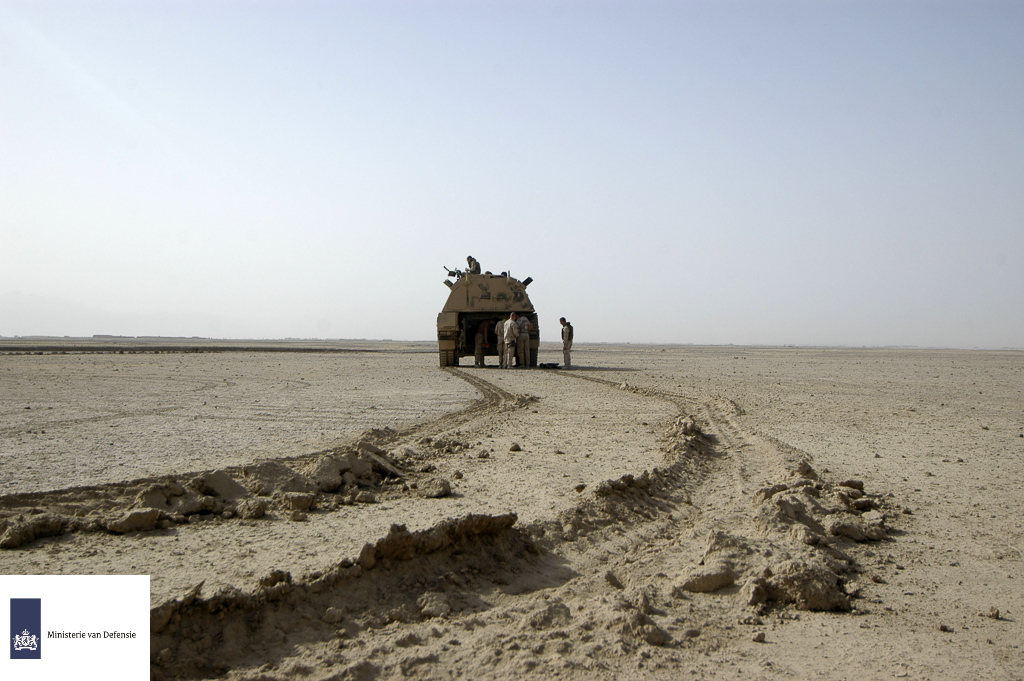
Also a Dutch Company-sized Task-Force took over responsibility for security of the Canadian Forward Operating Base (FOB) ‘Martello’, which is located in the Shah Wali Kot Region of Afghanistan, north of Kandahar Airfield (KAF), so that Canadian forces were free to hunt down the Taliban. This Operating Base has just recently opened in the district to help suppress the Taliban presents in the area and to provide support not only to the local villages but the local Afghan National Police and Afghan National Army elements in the area. Besides that, safeguarding the camp is also in the interest of the Netherlands, since this FOB is also situated on the supply route of the two Dutch camps situated in Tarin Kowt and Deh Rawod in Uruzgan.
During Operation Medusa these latter Dutch troops were, therefore, not directly engaged in the fighting. However, Dutch troops at FOB Martello were forced to fight when the task-force was staring down hundred of Taliban fighters in those fields that attacked them on the evening of 5 September with light weapons, RPG’s and heavy mortars. The camp was attacked again on the following morning. But this was said to have been a “minor action”. There were no fatalities among the Dutch troops. At the same time the Dutch Defence Ministry said an undisclosed number of attackers were killed.
The ISAF-led Operation Medusa was intended to drive insurgents away from the volatile Taliban hotbeds of Zhari, Panjwayi and Pashmul near the lush fields lining the dry Arghandab River so that civilians who have fled their homes can return. The area has been the site of fierce and fatal fighting over the four months prior to the mission and has spiritual and symbolic significance to the Taliban and is considered key ground for exerting control on Highway 1, a vital economic artery, and on Kandahar City, the economic centre of southern Afghanistan and the country’s second-largest city.
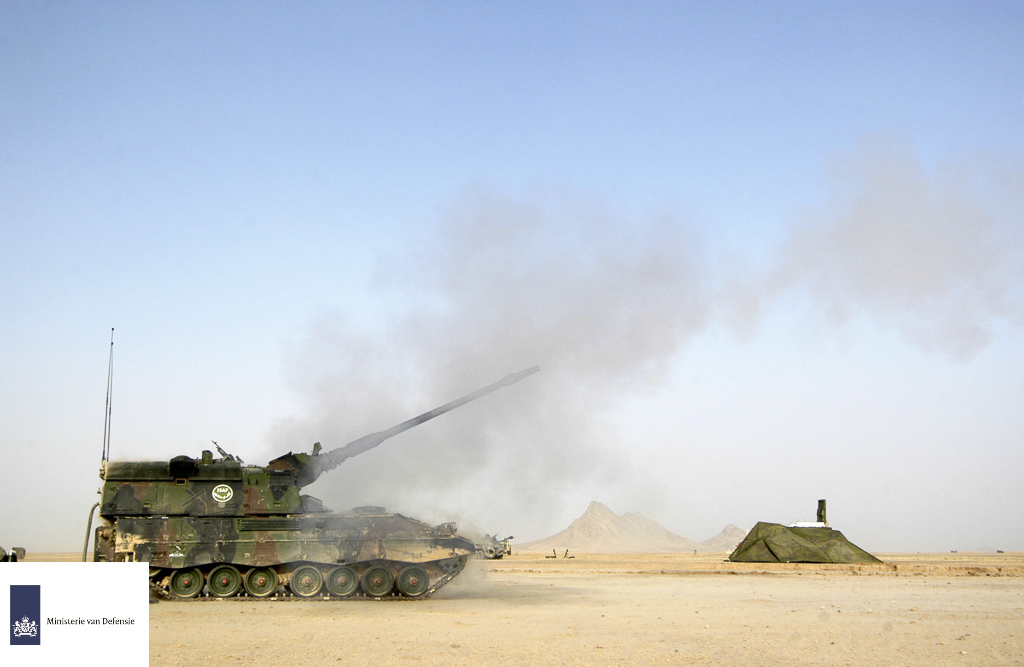
It is the biggest military operation in southern Afghanistan since the NATO-led ISAF took over the area from a US-led coalition at the end of July. Operation Medusa comes on the heels of Operation Mountain Thrust, a six-week operation involving Canadian, British, American and Afghan soldiers in the mountains of Southern Afghanistan that began in June and wrapped up in late July when control was transferred to NATO. The offensive involves almost the entire combat strength of Canada’s military in Afghanistan, backed by coalition troops and their Afghan allies. They have been deployed among others in Panjwayi, about 35 kilometres west of Kandahar city, a stronghold they use as a staging ground for deadly ambushes and terror attacks.
On the second day of the offensive four Canadian soldiers are killed and nine others were injured as they climb out of their troop carrier, during a battle with insurgents near the river’s north bank. The casualties halt the offensive, temporarily. In the following early morning the Canadians plan to re-launch their ground offensive, but two U.S. A-10 ‘Warthog’ Thunderbolt II tankbuster-jets accidentally strafes, with their cannons, a group of Canadian soldiers just minutes before the planned attack. One Canadian soldier dies in this tragic incident and wounding 30, 5 of whom were seriously wounded, and the offensive was delayed again. ISAF said the friendly fire incident happened after ground troops battling Taliban militants requested air support. The Canadian commander temporarily withdrew his forces and replaced them with Taskforce Grizzly, comprising 200 Afghan infantry backed up by US troops. On the left flank, Taskforce 31, comprising SBS and the newly formed British Special Forces Support Group (SFSG), mostly former paratroopers, together with US Army Special Forces, were used temporarily to “shape the battlefield”, seizing the initiative from the Taliban. While the SBS, SFSG and the US Special Forces gave the ISAF advance a kick-start from the south, other US special operations troops spread across the area to the south of the battlefield. They were ordered to keep out Taliban reinforcements and supply columns attempting to make their way along the desert roads from the Pakistani towns of Nuski and Quetta. The UK and US special forces boosted the southern advance considerably and after a few days they were withdrawn and reassigned to other tasks.
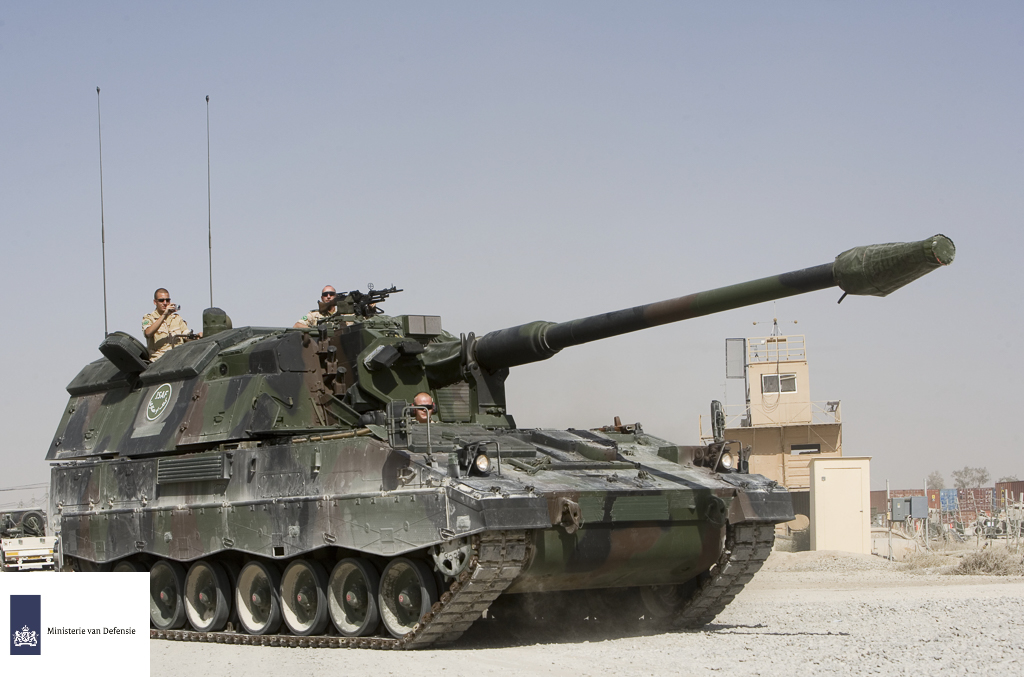
Canadian forces made then a breakthrough, pushing forward to hold positions well ahead of the Canadian lines. Additional troops rapidly pushed forward and very soon all Canadian combat forces were leap-frogging each other. The effect was like a vice, squeezing the Taliban out to the west where they were awaited by Dutch infantry, a Danish armoured reconnaissance company and, further out towards Maiwand, the British SFSG.
During Operation Medusa the British have also sustained losses without any effort on the part of Taliban. All 14 people on board a British Nimrod reconnaissance plane were killed, including signallers from the Special Boat Service (SBS) and the SFSG who were relaying intelligence collected by RAF colleagues, when the aircraft crashed on the first day of the operation.
Tragically this battlefield has a profound historical resonance for the British. This area was the scene of one of the most devastating defeats ever suffered by the British when, in July 1880, 2,700 British and Indian troops were outnumbered 10 to one by Afghan tribesmen. More than 1,000 British and Indian troops died but 7,000 of the enemy were killed in what was a pyrrhic victory for the Afghans.
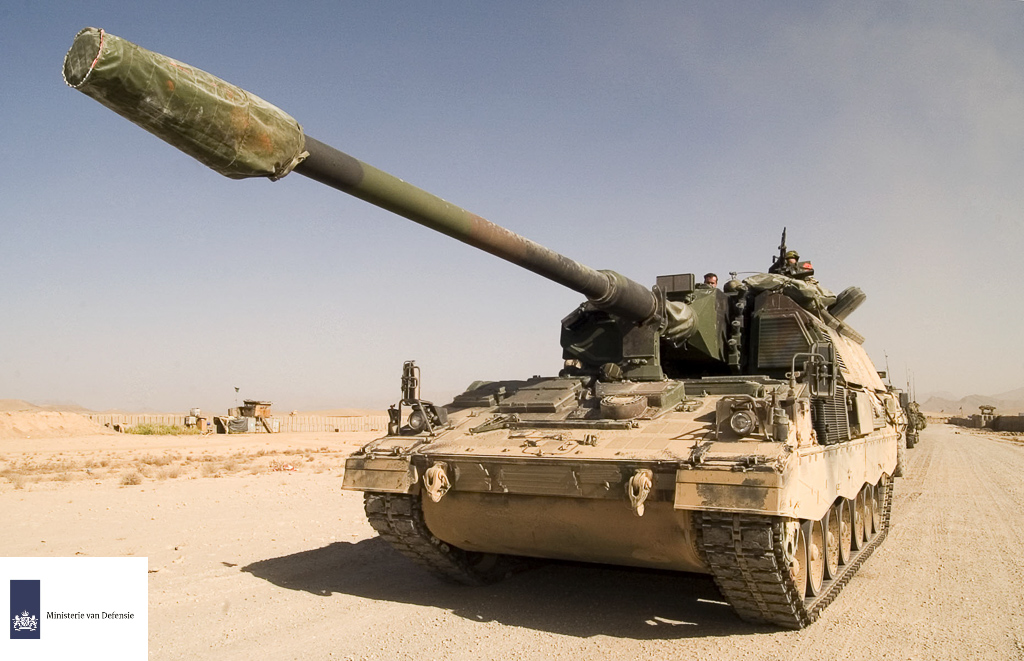
In order to facilitate Canadian participation in the major offensive against the Taliban, Dutch troops have now been deployed outside their area of operations (the province of Uruzgan). A week prior, Dutch TFU commander Colonel Theo Vleugels sparked off a fierce debate among politicians back in the Netherlands when he pointed out that such a potential risky movement of the Dutch troops is allowed under their current mandate. Dutch Defence Minister Henk Kamp explained that the Dutch troops will operate outside the agreed borders only very occasionally. However most of the Defence spokespersons in The Hague realize that calls from the allies for assistance elsewhere in Afghanistan cannot be refused since the Dutch troops might need the support of allies during attacks in the future.
Currently the Howitzers have all returned to the Dutch base camps in the Uruzgan Provence. Interesting fact hereby is that they have recently been firing illuminating rounds, with a radius in the neighbourhood of 1000 meters outside the camp. This means almost an maximum high angle of elevation of the gun, whereby two seconds after firing the illuminating round bursts at an altitude of roughly 1200 meters to light up the sky at night.
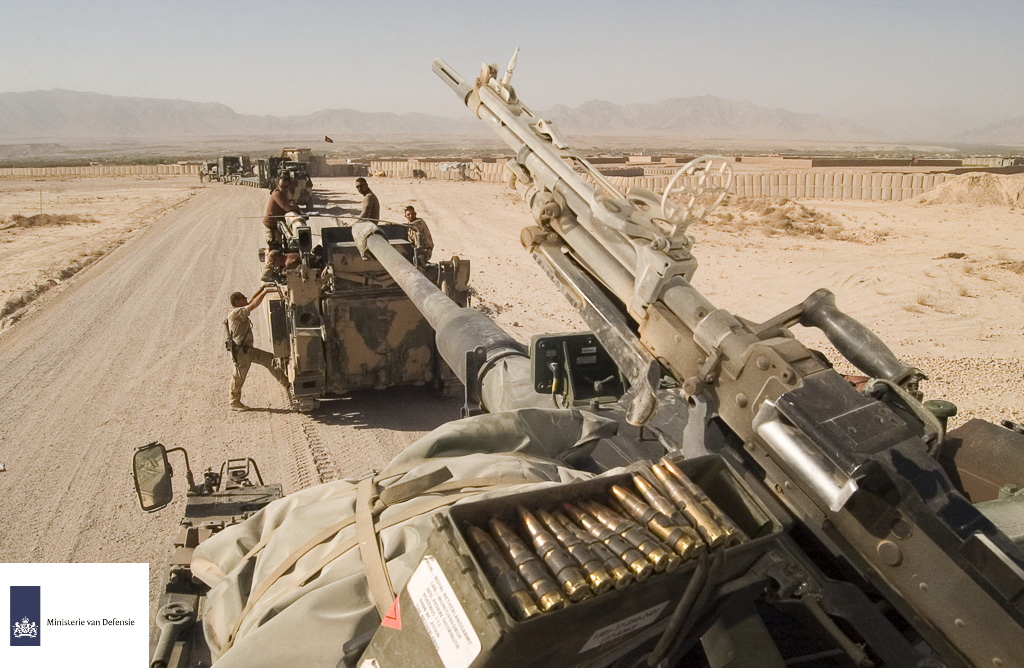
A NATO statement confirmed on 17 September that Operation Medusa has finished; the contested area has been formally cleared of insurgents. Since the commencement of the alliance offensive in southern Afghanistan, numerous Taliban tunnel systems, arms caches and bomb making equipment have been discovered, thus degrading their capabilities to threaten Kandahar in particular and the south in general.
Lieutenant-General David Richards, head of the 20,000 alliance -led force, hailed the mission in the insurgent stronghold of southern Afghanistan as a “significant success.” “It clearly shows the capability that Afghan, NATO and coalition forces have when they operate together,” said Richards. Although, its called “a tactical success”, there was no room for complacency and nobody was about to use the word victory. It has a namely a tendency to come back and bite you all over again.
Reconstruction and development efforts will soon begin in Kandahar, Uruzgan and Helmand provinces, said Richards.
It has been clear from the outset that progress in education, agriculture, economic development, public services and health care has to go hand-in-hand with providing a stable, secure environment. The Afghan authorities and ISAF are now focusing on the key task of ensuring that reconstruction and development can take place, in accordance with the priorities identified by the local authorities themselves. The Dutch mission statement still stands, because after this is done the Dutch go back to conducting those kind of operations.
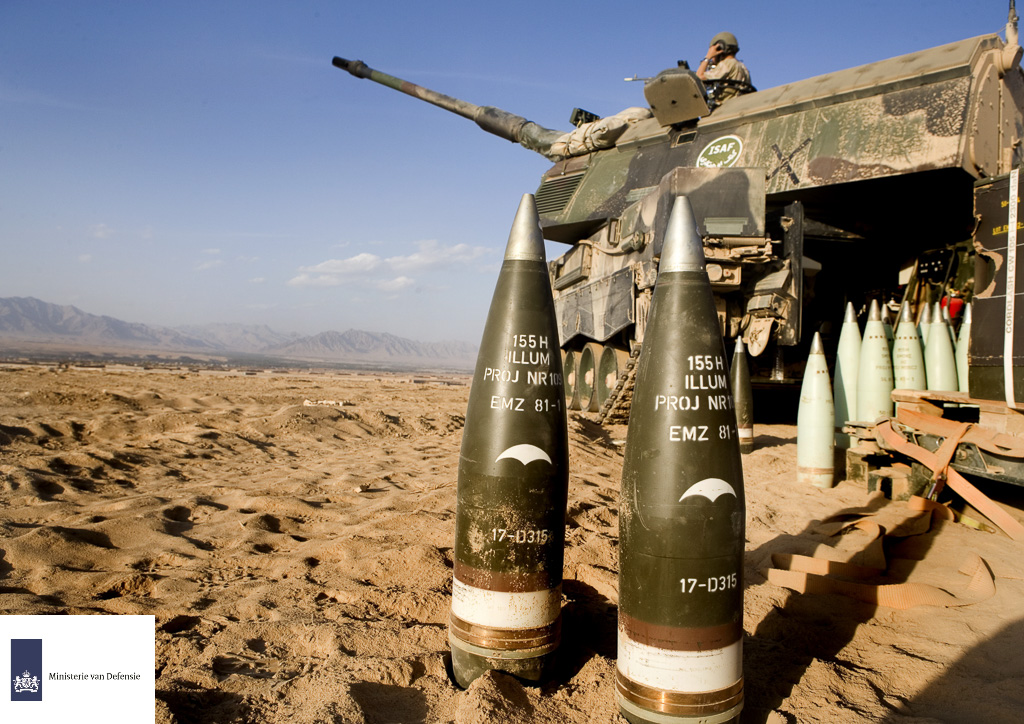
In the aftermath of this success the Canadian commander, Lieutenant-Colonel Omer Lavoie, is already musing about the lessons of the battle. One thing for sure is that the boldness of the insurgents has forced a re-evaluation of the need for heavy war-fighting equipment. If the Canadian commander would be asked five months ago: Do you need tanks to fight insurgents? He would have said, “No, are you nuts.” But… the tactics they have now transitioned to, very seldom do insurgents mass and concentrate the way they have done here and dig their feet into a stronghold. From his perspective, “they are acting more like a conventional enemy,” he said. “Then conventional assets like tanks certainly have their place here. The lesson learned is that you need to maintain those capabilities. If you are truly going to operate on the full spectrum of conflict, you need things that can operate on the far end, which are combat enablers like tanks, artillery and close-air support.”
Canada has about 2,200 troops in southern Afghanistan. But that number is about to get higher as Canada prepares to send an additional 450 soldiers and up to 15 Leopard 1 C2 main-battle-tanks to assist in the mission. The Leopards main job would be direct fire support. Its main gun is the 105mm L7A3, a weapon able to ‘mouse-hole’ a mud-brick wall with one shot. Canadian Forces (CF) officials also mentioned convoy escort duties. The Leopard C2 is very fast, hitting 65km/h on good roads or about 45 km/h cross-country. But these Leopards are anything but new. It remains to be seen whether 28-year-old tanks can run convoy duty. Maintenance and reliability issues aside, these tanks would be imposing. Like the Dutch PzH-2000NL SP howitzers, the tanks are heavily armoured, tracked vehicles. But were the Dutch Big Guns are specialized in ‘indirect’, or ‘non-line-of-sight’, fire support (at least at long ranges), the tanks high-velocity gun is their main asset. By comparison, ‘direct’ fire from high-velocity tank guns is ideal for deployment in Southern Afghanistan. Indeed, this was the exact role intended for the CF’s planned Mobile Gun System. But with MGS cancelled, attention turned back to the CF Leopards.
“First of all, we want to make sure they’re well prepared, well trained and ready to go off to Afghanistan before we send them. So many of the soldiers won’t go until later on this fall,” General Rick Hillier, CF chief of defence staff, said earlier. “While we are sending those soldiers in, we are reducing the force in place now because we are handing over command of region south, on or about the first of November to the Dutch. That means we will top out at about 2,500 soldiers all together,” Hillier said. With this infusion of troops, Canadians will make up well over 10 per cent of the NATO/ISAF contingent in Afghanistan.
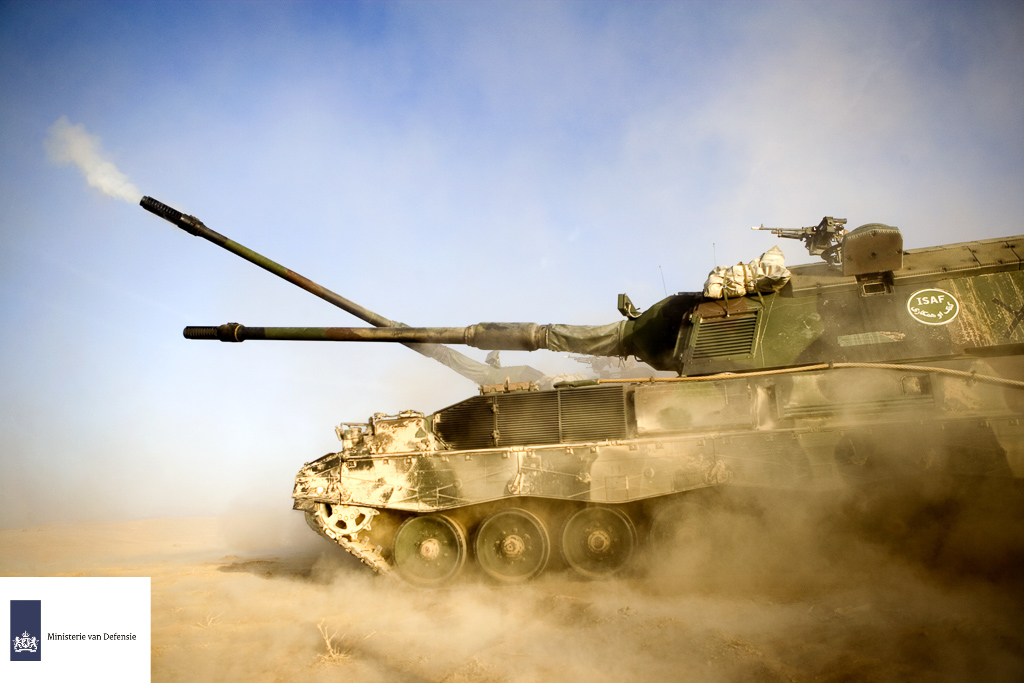
Casualties are difficult to estimate, but the operation appears (according to a reliable source) to have killed 230 to 300 insurgents, a number lower than NATO totals, but higher than the figure admitted by the Taliban. Despite the fact that many insurgents escaped, the showdown between ISAF forces and Taliban will probably improve the prestige of the foreign troops. Although, the alliance ISAF mission has not shifted primarily to combat operations, while Operation Medusa is but one part of the whole operation, it has been necessary to fight in this instance to achieve the required effect. Importantly it has proved that ISAF will not shirk from taking robust action where necessary and especially given the level of insurgent activity. Any misperception the insurgent forces may have had, that ISAF did not have the capacity to go in hard, well it is sure there is no doubt in their mind now. Its not sure they have ever seen, under any previous coalition, this amount of pressure. ISAF had the combat power to break them, leaving the remnants hopefully no other choice but to go back to operating in a typical insurgent, two- to 10-man sort of insurgent sections.
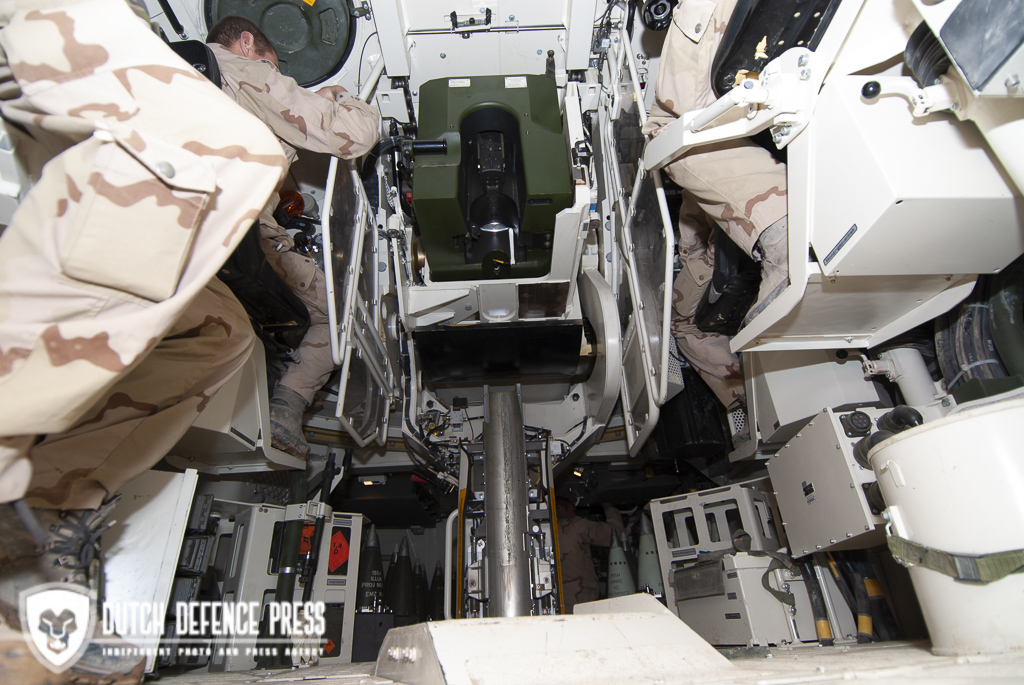
Recently, Germany has pledged one million euros, with the possibility of the sum rising to three million euros, of immediate assistance to the people of Kandahar province who had to leave their homes before and during fighting linked to Operation Medusa. Meanwhile the Netherlands is also actively considering donating a substantial sum.
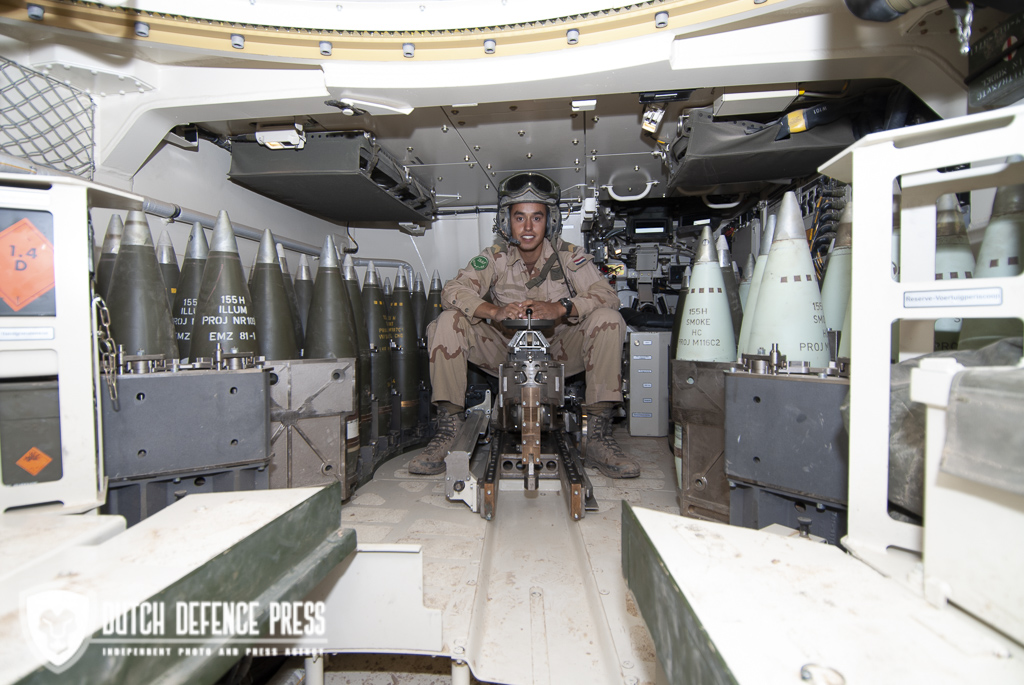
NATO Senior Civilian Representative in Kabul, Ambassador Daan Everts, sees it as further evidence of the alliance commitment to deliver practical help to the people of Afghanistan, and a stark contrast to the insurgents who are dedicated to destruction, “while we help rebuild lives and homes.”



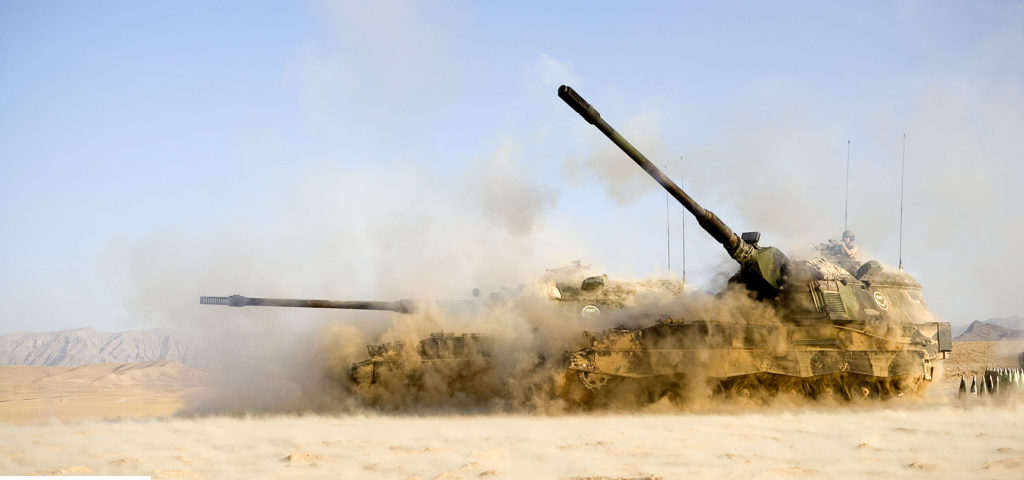
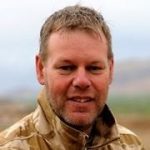
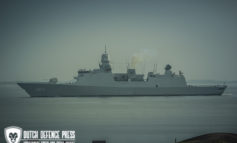
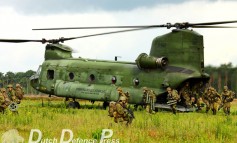
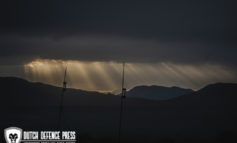
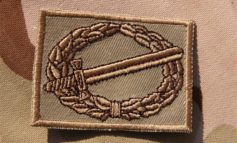
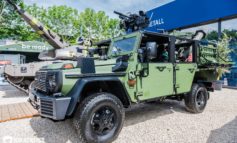



1 Comment
????????
28 december 2012 at 17:48????????…
Dutch Defence Press » Operation Medusa marks Combat Debut PzH-2000NL…